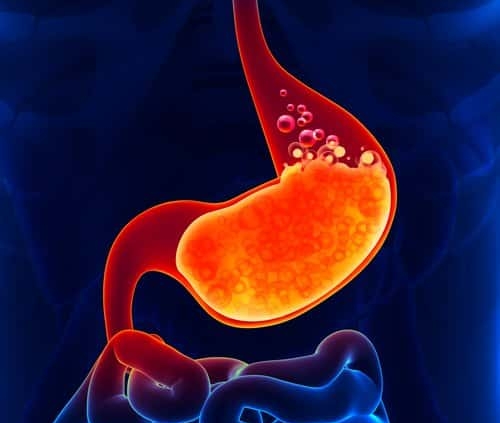GERD and Proton Pump Inhibitors: Seeking Alternatives
Ingrid Pincott, ND
Proton pump inhibitors (PPIs) are one of the ten most prescribed drugs in North America. PPIs are used in the treatment of acid reflux or GERD. I see at least one patient every week who is taking PPIs and wanting to get off them.
Bob, age 45, is a typical example. He has been taking PPIs for years and his GERD symptoms were not completely under control. He also had developed a rash he could not get rid of through conventional treatment so he is ready to try and improve his health. Certainly if a person is in severe gastric pain due to hyper-secretion of stomach acid, these drugs are useful to treat the acute phase. The side effects of long term treatment include: Decreased blood flow to the stomach, bacterial overgrowth in the stomach, hyperplastic polyp formation in the stomach, increased bile reflux and increased food allergy because food is not digested properly. Hypersensitivity reactions that can occur include urticaria, contact dermatitis, and drug rashes.
One of the reasons an MD might recommend a PPI for life is due to Barrett’s esophagus which increases the risk of developing esophageal adenocarcinoma (EAC). However, in some recent research published by F. Hvid-Jensen, 2014, the risk of developing EAC increased with PPI use due to the increased formation of polyps while taking the drug!
Other complications of long term PPI use include: gastrin secretion increases, contributing to the risk of colon cancer, and esophageal adenocarcinoma; women taking PPIs have an increased risk of hip fracture, and reduction in bone density; there is also an increased risk of developing community acquired pneumonia especially in the elderly; and, finally, there is an increased risk to developing C. difficile as well as an increased risk of having a heart attack.
I recommended to Bob to come off PPIs gradually over six months to avoid rebound excess stomach acid. Some patients I have seen come off a lot faster than that because they did many other changes at the same time. For example removing wheat from their diet, eating a low carb diet, and eating food in proper combination helps a great deal to reduce GERD symptoms quickly. I put Bob on my candida program which addressed a lot of these recommendations in one protocol. The “yeast” killers help to kill off harmful bacteria and taking a strong probiotic away from the “yeast” killers helps establish a healthy microbiome. I told Bob this treatment program has helped many with chronic GERD.
I also have great success with a digestive aid containing licorice, marshmallow and slippery elm that is aimed to heal the stomach and help digest starches and fats without the use of protease, which can aggravate these cases in the early phases of treatment.
I saw Bob one month later. He was using the PPIs much less and was amazed. His skin was beginning to clear and he was much less itchy. He continued on the candida program for another two months and once he was off the PPIs I recommended a slightly stronger digestive enzyme. During this time I noticed on his blood work results that his liver and gallbladder were abnormal so I added a bile thinner and detoxifier for at least three months.
At the six month mark, Bob had lost 20 pounds due to the diet changes, his liver enzymes were back to normal and the only digestive aid he needed were the probiotics and the digestive enzyme. Often the symptoms of too much stomach acid are the same as too little stomach acid. The rest of his maintenance health program included B complex, vitamin B12, omega-3 essential fatty acids, vitamin D and a calcium magnesium complex. PPIs deplete magnesium and B12 so we had some catching up to do because he had been on them for so many years.
[A version of this article originally appeared in the Campbell River Mirror, March 25, 2016.]

